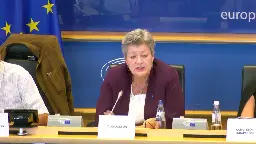EU commissioner sidesteps MEPs’ questions about CSAM microtargeting
EU commissioner sidesteps MEPs’ questions about CSAM microtargeting

The European Union's home affairs commissioner, Ylva Johansson, has confirmed the Commission is investigating whether or not it broke recently updated

[ sourced from TechCrunch
